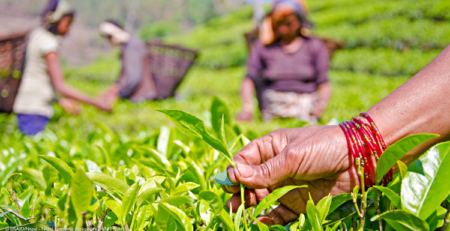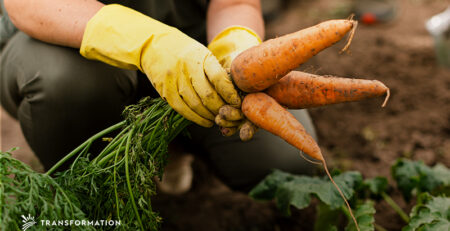A Sustainable Future for Animal Agriculture
Livestock production has a role in the climate crisis that is not understood by the general population and even by many advocates. Those who are more educated about climate change can note that cow burps release the greenhouse gas methane, which in turn, contributes to climate change. However, a far smaller group understands the extensive butterfly effect of the industrial animal agriculture system, including pressures on land resulting in deforestation.
Agriculture is a key driver of environmental impacts, including land-use change, greenhouse gas (GHG) emissions, water use, and pollution. Livestock is responsible for a considerable proportion of these impacts, claiming one-third of the world’s cropland for animal feed and generating 14% of all human-caused greenhouse gas emissions.
Because raising livestock requires a large chunk of farmland to grow feed, the need for farmland has necessitated deforestation. Deforestation comprises the majority of net CO2 emissions (5.2 ± 2.6 GtCO2 yr-1) released from all agricultural processes. In terms of our livestock global land use, 64% of farmed land produces only 10% of human calories, resulting in a net loss of calories in the system. When looking to invest in a future with food security, these statistics simply don’t add up.
Our Current System
Animal agriculture went through the same process of industrialization as the rest of our food system. Livestock production saw unparalleled expansion with the invention of Confined Animal Feeding Operations (CAFO), describing the mass industrialization of the breeding, raising, and slaughter of animals for human consumption. Confined livestock demonstrates lower emissions than free-range animal production because CAFOs require less land, invertedly reducing deforestation. However, this does not mean that animal intensification is the most climate-friendly solution.
There are many environmental hazards associated with CAFOs, including water contamination as a result of the excess application of untreated animal waste on farmland and skyrocketing rates of antibiotic resistance. Eighty percent of antibiotics purchased in the United States are used for livestock. Furthermore, these operations continue to incentivize further expansion of agricultural land used for animal feed, including corn and soy crops. There are better opportunities for investment in sustainable solutions within animal-protein production.
Sustainable Animal Agriculture
Sustainably managed livestock contribute to crucial ecosystem functions, including nutrient cycling, soil carbon sequestration, and the conservation of agricultural landscapes. Manure, rich in the nutrients and organic matter key to soil health, promotes carbon sequestration and climate change mitigation.
Furthermore, livestock production can make use of the world’s leftovers instead of requiring extensive inputs. Livestock can digest biomass that humans cannot, such as fibrous feeds and food waste. This transition in animal feed from grain and starches to food waste and crop residues would yield increased natural resource use efficiency and improve human food security.
Another sustainable alternative involves moving livestock to spaces where crop production does not naturally occur, such as dry, remote, rocky, or steep terrains. By raising livestock in areas where food cannot already be grown, animal agriculture can transform into an operation that doesn’t pressure the already struggling current agriculture system. Put simply, the achievement of the UN’s Sustainable Development Goals, including “no poverty” and “zero hunger” will not be supported by continued land use expansion.
Sustainable Management Practices
There are viable pathways forward to sustainable animal agriculture systems. Alternatives to current livestock management practices have the potential to restore natural resources, climate stability, and human health. Specifically, this will improve plant biodiversity in grasslands which, in turn, will enhance productivity, resilience, and other ecosystem services. Besides contributing to ecosystem services, low carbon livestock production is possible. Well-documented solutions in agroecology can contribute to climate change mitigation. Solutions fall into three main categories:
- Improving efficiency: Better animal health/welfare extends reproductive life and reduces animal losses
- Improving pasture management: integrating trees (silvopasture), diversifying landscape (include nitrogen-fixing legumes), nutrient management
- Recycling: vertical integration (manure & by-products) for improved economic returns and emissions reduction
Financial Potential
There is tremendous financial potential for investments in resilient models of vertical supply chain integration and the fostering of biodiverse genetic pools to improve food security and increase climate resilience. Agricultural producers who rely on different sources of income, including a variety of crops and animals, are less vulnerable in case of droughts, floods, or market shocks. Specific markets for such products provide an opportunity to add value and improve livelihoods, and to conserve animal genetic diversity by keeping them in profitable use.
Silvopasture has great potential because it fosters diversity and climate resilience. Silvopasture integrates trees, pasture, and forage into a single system. Incorporating trees improves land health and significantly increases carbon sequestration. According to Project Drawdown, stakeholders “could realize financial gains from revenue diversification of US$1.7-2.3 trillion, on investment of US$206-273 billion and lifetime operational cost of US$2-3 trillion to implement.” While Silvopasture can be costly and slow to implement, this model averts and sequesters emissions while protecting against climate extremes that are now inevitable.
Conclusions
On the one hand, most regions over-consume protein, and current data reflect rising rates of protein consumption in emerging economies. On the other hand, inequitable access to food and protein sources, reflect that 25% of the world’s children have stunted growth and 795 million people are food insecure. It is time for a turning point. The implementation of true-cost accounting would reflect the socioeconomic and environmental realities inherent in the livestock production industry.
However, the potential for sustainable business correction is only one part of the picture. System change requires a global shift in capital deployment toward livestock production systems that benefit the health of the environment and people. Transitioning to sustainable animal agriculture systems is multifaceted, urgent, and requires a systems approach on local and global scales to address both production and consumption. For investors, this is the moment to invest in the future.




Leave a Reply